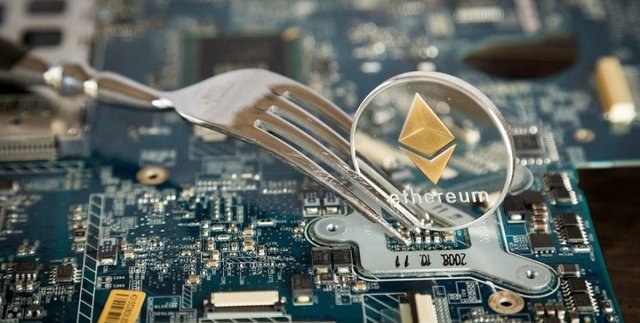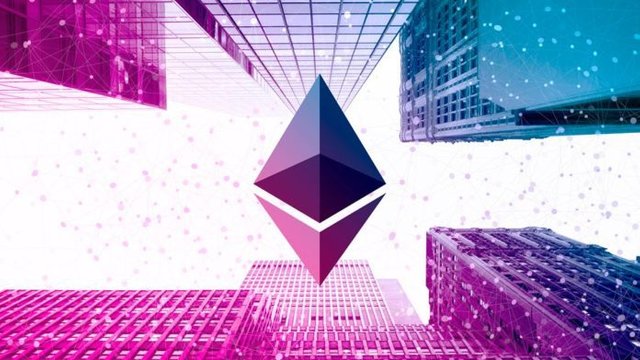How to understand Ethereum's Constantinople step by step

What is Constantinople?
Constantinople is the name that receives the next hard fork of Ethereum which aims to implement 5 new proposals to improve the operation of the network.
These 5 proposals will permanently alter the chain of blocks with a series of new updates incompatible with previous versions.
This means that the network of computers running the Ethereum software must be updated along with the entire system or continue to function as a single blockchain entity separately.
Constantinople is defined primarily as a "maintenance and optimization update" because it presents small improvements that will not produce "a big change" for the end users of the network but will be highly technical in the efficiency of the network and the structure of the networks. rates, as well as updates that ease the way for Ethereum's advance escalation roadmap.
In short, Constantinople, like most forks, comes to optimize the Ethereum network and make it much more fluid in terms of economic policies and the delay of the difficulty bomb, which is a code programmed to activate what it is known as the "ice age" of Ethereum, in which the creation of new blocks in the network eventually diminishes to a complete stop.
Knowing this, we can now enter into what would be the 5 improvement proposals of Ethereum (EIP, for its acronym in English) for this new update, so below is a brief description of each:
EIP 145: a technical update written by two Ethereum developers, Alex Beregszaszi and Pawel Bylica, details a more efficient method of information processing in the network known as bit-level change.
EIP 1052: Written by lead developer Nick Johnson along with Pawel Bylica, offers a means to optimize large-scale code execution in Ethereum, this proposal together with the EIP 145 are directly focused on the Ethereum Virtual Machine (EVM)
EIP 1283: Based on EIP 1087, written by Johnson, this proposal primarily benefits smart contract developers by introducing a more equitable pricing method for changes made to data storage.
EIP 1014: created by the founder of Ethereum, Vitalik Buterin, the objective of this update is to facilitate and improve a certain type of scaling solution based on state channels and "off-chain" transactions.
EIP 1234: Defended by Afri Schoedon, launch manager of Parity, Ethereum's most important customer, this update is the most controversial of the lot, reducing the emission of block mining rewards from 3 ETH to 2 ETH, and delaying the pump of difficulty for a period of 12 months.
As mentioned at the beginning, these changes focus on modifying codes to improve "processing times for developers, pricing structures to make them fairer in terms of changes made in the intelligent storage of contract data (...) and changes in the economic policy of the network ".
Now, we are going to focus on two important points, the first one of the EVM and the second that of the mining rewards that are, in some way the most important.
As part of an effort to maintain the useful life of the Ethereum network and optimize performance to better meet the needs of users, both EIP 145 and EIP 1052 seek to optimize the experience of smart contract developers specifically.
According to CoinDesk, the EIP 145 introduces the native "bit-level offset" functionality that can be executed through the byte code without relying on arithmetic operations such as multiplication and division. In effect, this means that the intelligent contracts that underlie decentralized applications such as CryptoKitties will be processed faster by the EVM.
On the other hand, when smart contracts in Ethereum are executed and requested, the EIP 1052 introduces an update by which only the essential data of the contract code is verified instead of the entire code itself.

That is, instead of verifying the complete contract, the EIP 1052 does it so that a line of compressed code or a "hash" can be verified, saving time and computing costs, especially for extended intelligent contracts that run in thousands. of lines of code.
As for the issue of the miners' reward, there is a whole controversial issue because Bitmain launched a new ASIC chip at the beginning of the year focused only on Ethereum, so at that moment the possibility of launching a fork protect the network from the new chips.
In view of the fact that Ethereum does not have a formal monetary policy, the reduction of the reward according to merchant Eric Conner, can be considered as a "detention gap" whose ultimate goal is to stop a possible leak in the supply with these new chips in that those with greater extraction power can wreak havoc on the total ETH supply.
The first time a possible update was announced was in April in response to the new mining chips. Later, it was confirmed that a fork would indeed be carried out, which was expected to be tested in a testnet on October 9 to reduce risks and then officially launched in November.
As CryptoTendence previously reported, the test in the testnet did not have the expected results due to an error in the activation. At that time, one of the developers of Ethereum clarified that they were already working to solve the problems already discussed.
Finally, last Friday, October 19, the developers confirmed that the hard fork would be online by the end of January or the beginning of February 2019 due to the activation problem in the testnet.
Warning! This user is on my black list, likely as a known plagiarist, spammer or ID thief. Please be cautious with this post!
If you believe this is an error, please chat with us in the #cheetah-appeals channel in our discord.